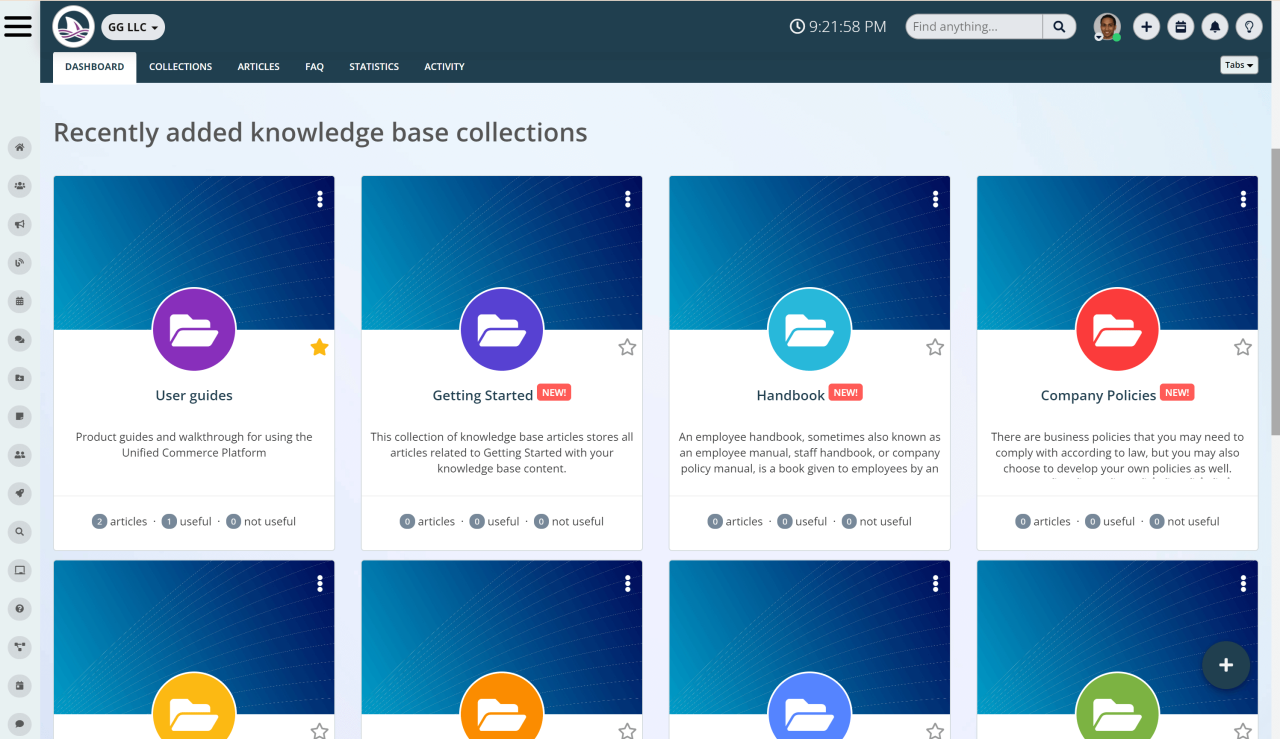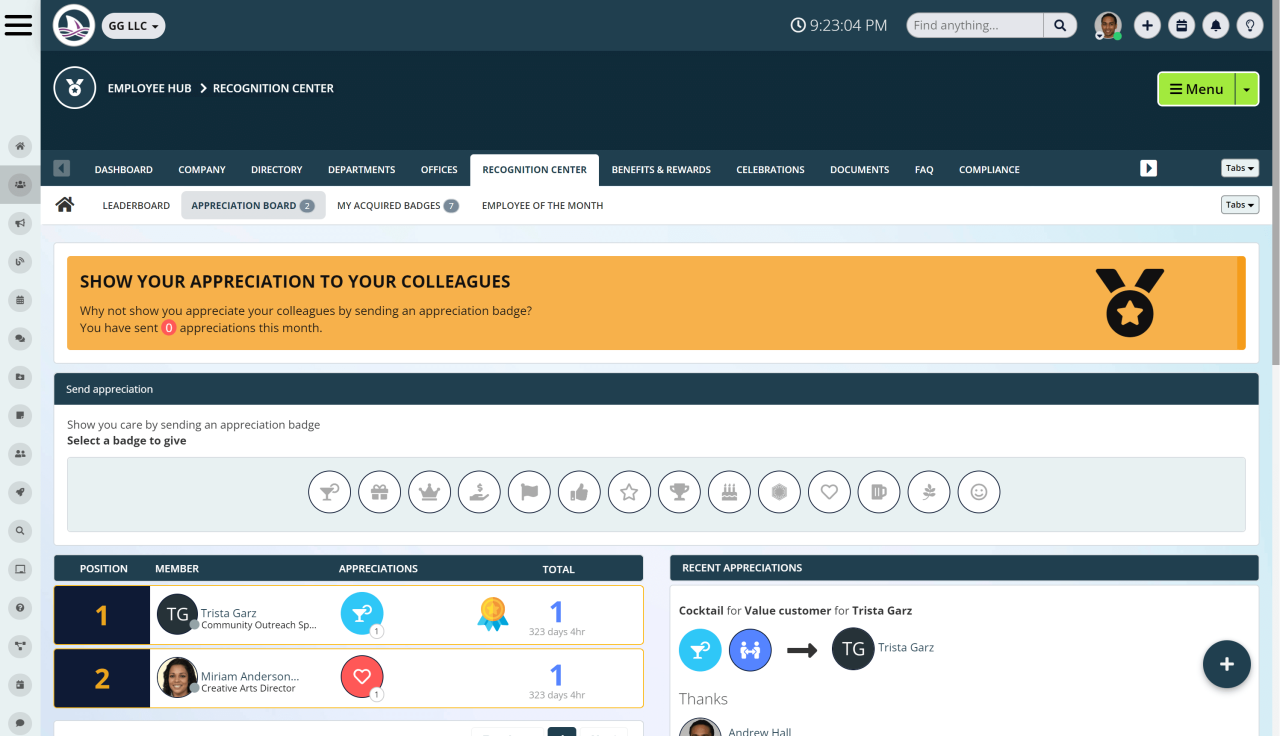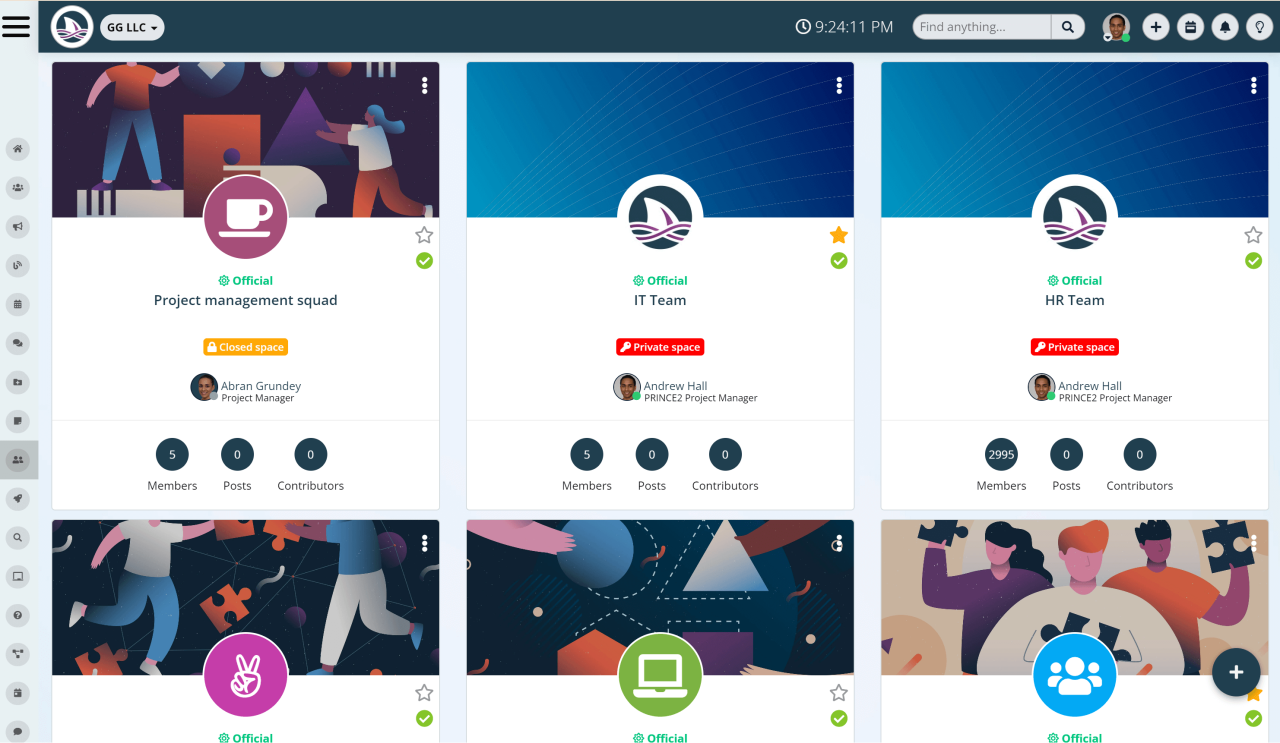Insight Blog
Agility’s perspectives on transforming the employee's experience throughout remote transformation using connected enterprise tools.
16 minutes reading time
(3215 words)
13 Ideas on How to Create a Connected Workplace
Learn how to create a connected workplace with strategies that foster collaboration, communication, and a thriving organizational culture.
"How to create a connected workplace" has become a pivotal question for leaders in the modern business world, where the traditional office setting, often characterized by individual cubicles and formal meeting rooms, no longer represents the majority of employees' daily work environment.
As the pandemic and the shift to work-from-home policies have redefined our workspaces, many now prefer remote or semi-remote, hybrid working styles, choosing to visit the office only occasionally.
This transformation, while welcomed by many for its flexibility, brings forth significant concerns for company leaders about maintaining a robust corporate culture, fostering employee engagement, and ensuring a collaborative work atmosphere.
The prevalent mindset among these leaders is the belief in the necessity of physical presence for effective collaboration: "Out of sight, out of mind." However, the real challenge lies in each leader's commitment to fostering a workplace where connectivity and collaboration are paramount, regardless of physical location.
The common misconception that job satisfaction is mainly driven by higher salaries and tangible benefits, like complimentary lunches, is gradually being dispelled. In truth, the essence of a fulfilling job experience lies in meaningful interpersonal connections.
There's a direct link between an employee's sense of belonging in the workplace and their engagement levels, which in turn impacts their overall performance and success.
In our current business environment, the importance of feeling connected at work cannot be overstated. It is imperative for leadership, management, and peers alike to actively engage in creating a workplace where connections are not only possible but encouraged and nurtured.
Such an environment promises extensive benefits for the organization, enhancing both individual and collective success.
Defining a Connected Workforce and the Essence of Connected Employees
The term "connected workplace" denotes a technological framework that consolidates various tools and resources into a singular, centralized platform. This integration facilitates employees' access to essential business services irrespective of their geographic location.
Such a system encompasses all vital elements needed for an organization to efficiently organize, execute, and oversee services that benefit both customers and employees.
The ultimate aim of a connected workplace is to augment productivity across employee activities and organizational processes.
Transcending traditional spatial limitations, a connected workplace achieves a harmonious fusion of assets, business operations, and technological instruments. It equips employees, whether they are remote, hybrid, or office-based, with the means for effective communication and collaboration.
Cox emphasizes that achieving a connected workforce could remain elusive without access to a high-quality internet connection. An inferior connection may lack the necessary bandwidth to effectively connect with remote employees.
Therefore, it is crucial to ensure a super-fast internet with limitless bandwidth, enabling seamless conduct of meetings, analysis of reports, and staying connected with your team.
Catering to 42 million Spanish speakers in the U.S., they can connect to Cox Servicio al cliente for Spanish customer support.
Benefits of Having a Connected Workplace
A connected workplace brings forth a multitude of advantages for both employees and their managers, revolutionizing the traditional work environment.
- Flexibility: The contemporary workforce craves flexibility in both work life and the physical workplace. Acknowledging and honoring employees' needs for flexibility empowers them to deliver their best work. By providing ample quiet time, limiting meetings, and steering away from rigid schedules, organizations create an environment conducive to productive work. A workplace that prioritizes flexibility places employees at the forefront, recognizing that a positive company culture stems from listening to and accommodating the diverse needs of its workforce.
- Accessibility: In both professional and personal spheres, individuals seek recognition for their unique qualities. A connected workplace, characterized by flexibility and inclusivity, ensures that every employee has enhanced access to resources, information, training, and collaboration opportunities. By tearing down barriers and fostering an environment that values diversity, a connected workplace sets the stage for greater inclusivity and collaboration.
- Cost Efficiency: A connected workplace not only transforms the work culture but also contributes to improved business performance. Enhanced productivity, efficient knowledge management, and effective time management collectively drive better company outcomes. A study by Forrester revealed that companies implementing a connected workplace, such as with a AgilityPortal, experienced substantial savings
- Employee Experience and Engagement: Ultimately, a well-connected workplace significantly enhances employee experience and engagement, providing substantial benefits to any organization. Retaining top-performing employees and fostering their growth becomes achievable by equipping them with the tools and environment that facilitate collaboration and flexibility. A connected workplace is designed with the understanding that employees thrive in an atmosphere where they can collaborate seamlessly with team members while also having the autonomy to work independently. This collaborative and flexible corporate culture results in heightened employee engagement, as individuals feel more in control of how they manage their time and tasks.
In the ever-evolving landscape of work, organizations that prioritize connectivity and flexibility are not only responding to the desires of their employees but are also strategically positioning themselves for sustained success and growth.
Envisioning a Connected Workspace
The concept of a connected workspace materializes vividly in a study by Future Workplace, an HR advisory firm, and Virgin Pulse, a technology solutions provider. This research, encompassing 2,000 managers and employees, revealed that 45% primarily use email for team communication. Intriguingly, over 40% of these individuals often feel isolated, disengaged from their work, and have a substantial desire for social interaction.
In today's business landscape, fostering a sense of connection in the workplace is crucial for achieving success. It falls upon managers to inspire employees to immerse themselves in their work and establish meaningful relationships with their colleagues, thereby generating positive outcomes.
The cornerstone of a connected workspace is flexibility. Employees value having a variety of choices regarding their work location, methods, and timing. A connected workspace ensures that whether an employee is in a traditional office, working from a home office, traveling, or away from their desk, they can always access their digital headquarters.
This unified platform is pivotal in providing a connected experience and facilitating collaboration, knowledge exchange, and interaction with fellow colleagues.
Advantages of a Connected Workplace
The concept of a connected workplace extends numerous advantages to both employees and their managers.
Follow us and access great exclusive content everyday: Follow us on Google News
Flexibility
An overwhelming desire for flexibility characterizes today's workforce. Recognizing and respecting this need empowers employees to excel. A flexible work environment prioritizes sufficient uninterrupted time for focused, productive work, eschewing rigid schedules.
This approach accommodates personal responsibilities related to family, home, and health. Such adaptability underscores an employee-first ethos.
How else can a positive organizational culture flourish if not by responding to employees' preferences and refraining from imposing stringent location and time constraints?
Accessibility
In the modern landscape, individuals yearn for recognition and validation of their distinct identities, whether in professional or personal realms.
A connected, flexible, and inclusive workplace is the cornerstone of empowerment, providing each employee with seamless access to critical resources, information, training, and collaborative prospects.
This harmonious integration fosters an environment where diversity is celebrated and all voices are heard, ensuring that no one is left on the periphery.
You may also like: Best Apps for Employees: UPDATED 2022 – A Complete Guide
Cost Efficiency
The financial implications of a connected workplace are substantial.
Elevated productivity, efficient knowledge management, and streamlined time utilization collectively bolster organizational performance, translating into a healthier bottom line.
The advantages of a connected environment extend beyond the workforce, resonating positively with the fiscal health of the entire business entity. It is a symbiotic relationship where employee well-being aligns harmoniously with business prosperity.
Enhancing Employee Experience and Engagement
A well-integrated, connected workplace significantly elevates the employee experience and engagement, offering substantial benefits to any organization. Companies are keen on retaining high-performing employees and fostering their growth.
Providing the necessary tools for employees to thrive is essential in today's corporate landscape.
A connected workplace is inherently flexible. It allows employees to collaborate effectively with team members and also work autonomously as needed. Such an environment promotes a culture of increased cooperation and mutual support.
Employee engagement tends to rise when individuals have greater autonomy over their work arrangements, starting from the choice of their workspace. This level of control and flexibility plays a crucial role in enhancing overall job satisfaction and performance.
Free ebook: How To Get Your Intranet Off The Ground
13 Strategies for Fostering a More Connected Workplace
When aiming to enhance workplace connections, how can a company effectively achieve this objective? Implement the following strategies, taking into account time and budget constraints, to cultivate a heightened sense of connection across the entire workplace.
1. Embrace, Share, and Exemplify Your Company's Mission, Vision, and Values
Initiate the process by ensuring that every team member has the opportunity to deeply grasp your organization's mission (its fundamental purpose), vision (long-term aspirations), and values (core principles and beliefs). Leverage the onboarding procedure to craft personalized journeys for each employee, spotlighting your company's vision and values.
Leaders should lead by example, consistently reinforcing the company's mission. Create office events and initiatives that prominently showcase your mission and values.
Utilize your internal communication platform to continually educate all employees on their role in contributing to the company's success and its overarching vision.
2. Foster Employee Connections
In the corporate landscape, managers and Human Resources professionals walk a delicate line. They are perceived as representing the company's interests while also being tasked with closely collaborating with employees to ensure they receive the necessary support for success.
Individuals in these roles should proactively invest effort in acquainting themselves with employees across various organizational roles. This effort is crucial in establishing trust, which becomes vital when employees seek guidance or voice their concerns in the future.
3. Cultivate Communities of Expertise and Promote Knowledge Sharing
Communities of expertise serve as valuable conduits for harnessing the wealth of knowledge within the organization.
These forums provide employees and teams with platforms to exchange insights, brainstorm ideas, and engage in collaborative endeavors spanning multiple locations.
Participation in these communities empowers employees to hone their existing skills and expand their knowledge base by collectively tackling challenges alongside their peers. Additionally, they gain access to valuable feedback and support from subject matter experts.
Central to these communities are accessible libraries housing documents and resources, ensuring that the work undertaken by these key contributors benefits others within the organization in subsequent endeavors.
4. Institute Peer Mentorship Initiatives
Peer mentorship programs serve as integral components of leadership development or onboarding processes for new employees. In both scenarios, these programs convey a powerful message: knowledge and personal growth hinge significantly on social connections.
These initiatives are highly regarded among employers striving to provide valuable benefits to their workforce without necessarily increasing salaries. Instead, they prioritize fostering meaningful human connections that offer invaluable knowledge and networking opportunities.
5. Foster an Inclusive Environment
A workplace should epitomize a haven where every individual experiences safety and freedom from bullying or harassment. Some organizations advocate for a "family-like" atmosphere, but this approach may not resonate with employees from backgrounds where familial environments weren't nurturing. Encouraging employees to treat everyone with dignity and respect is paramount.
Employees must possess confidence that their concerns will be addressed seriously. Implement specific policies to promptly and equitably investigate complaints that contravene company guidelines.
An environment where employees feel comfortable expressing their concerns is pivotal; it fosters a sense of connection and belonging among the workforce.
6. Implement an Employee Recognition Hub
An intranet serves as more than a repository for work-related documents. It can be harnessed as a vital conduit for facilitating employee connectivity. Leverage it to spotlight specific employees and teams, showcasing content that aligns with the company's initiatives or the prevailing season.
This strategic approach empowers distinct communities within the organization to acknowledge and celebrate their peers' outstanding contributions, thereby enriching the company's overall culture.
AgilityPortal, an intranet solution, incorporates an employee recognition center directly into its platform. This feature facilitates the creation of a virtual employee recognition system that enjoys heightened visibility across the entire company compared to one-on-one exchanges.
For instance, employees can exchange peer-to-peer recognition, underscoring how their colleagues assist others across various business functions.
This approach effectively promotes employee accomplishments, with virtual "badges" serving as lasting testaments on employees' profiles, visible to all their colleagues.
7. Foster Seamless Information and Communication
Maintaining a continuous flow of information throughout the organization is paramount.
This entails facilitating the movement of information in multiple directions: top-down, bottom-up, and even in peer-to-peer interactions. Encourage employees to pose questions and provide feedback to their managers. Certain situations may necessitate information dissemination from management to employees.
Ensuring the availability of appropriate communication tools is crucial, allowing management to convey pertinent information to employees in a timely and efficient manner. Modern intranet platforms, such as AgilityPortal, offer a range of communication tools.
These include the capability to launch communication campaigns, disseminate crucial company announcements, and provide a platform for employees to leave comments.
This comment feature serves as an effective means to gather feedback and allows employees to seek assistance when needed.
8. Establish Interest-Based Communities
Encourage employees to connect beyond their work-related roles by delving into their interests outside of the workplace. Employees sharing common interests can participate in relevant interest-based communities, offering a platform to engage with colleagues and discuss shared passions. Within these communities, members can freely share images, videos, or links to intriguing online content.
Particularly beneficial for remote or satellite office workers, involvement in these interest-based communities provides an avenue to acquaint themselves with coworkers in a more relaxed and sociable setting. Participation in such communities doesn't require expertise in the topic under discussion; a genuine interest is all that's needed to forge connections with peers.
These communities may span various areas, including company health and well-being initiatives, featuring groups like a recipe exchange, a running enthusiasts meetup, or more socially-focused communities like a "pet corner" for sharing pet photos and engaging in fun Friday challenges centered around topics such as favorite movies, sporting your favorite hat, or reminiscing about cherished travel experiences.
9. Organize Routine Employee Social Gatherings
To foster a connected workplace that transcends the boundaries of traditional working hours, it's imperative to nurture relationships among employees through meaningful social experiences. While games and team outings are great, volunteering together can be an especially powerful way to connect, blending social interaction with a shared sense of purpose.
These events can encompass various types and themes, provided they aim to involve individuals from diverse teams and departments. Engaging in competitions and games can add fun to gatherings, as can participating in local events and volunteering opportunities.
Whether it's supporting local causes or organizing team-led initiatives, volunteer events help bring employees together across departments in a way that feels both engaging and impactful. For inspiration, consider these volunteering examples from leading brands that have successfully integrated purpose into their workplace culture.
Consider dedicating at least one event to celebrating individual employee and team contributions to the company's achievements.
This occasion also serves as an opportune moment to acknowledge employees who have gone the extra mile in contributing to the local community. Such gatherings reinforce the sense of community and shared purpose within the organization.
10. Establish an Employee Directory
Employee directories, often associated with large corporations where employees may not have in-depth knowledge of their colleagues or how to reach them, prove to be a valuable resource for organizations of all sizes. They offer workers the essential information they need, eliminating the need for time-consuming searches.
Once an employee identifies a colleague who can address a query or provide necessary information, swift contact can be initiated. The individual being contacted serves as a pivotal link in the knowledge-sharing chain, sharing their insights and even suggesting another colleague who might offer assistance.
Employee profiles can extend beyond strictly corporate details, enabling individuals to showcase personal preferences. For instance, in the hospitality industry, employees can share their favorite dishes or visit locations, while healthcare organizations can encourage employees to express their healthcare passions.
These open-text fields can foster a more social atmosphere, with some companies including entries about favorite books, hobbies, and beloved movie characters.
11. Cultivate a Culture of Experimentation
Clinging to outdated policies and procedures solely because "that's the way it's always been done" is one of the least compelling reasons for retaining them. When established practices no longer yield the desired results, it's time to explore alternative solutions.
Many employees express dissatisfaction with meetings, often citing their inefficiency and their propensity to consume excessive workday hours. If strategies like implementing written agendas fail to trim meeting durations, consider revamping the meeting format. Enforce adherence to the agenda, curtail pre-meeting discussions and introductions, and optimize the meeting structure.
Once these new processes are implemented, encourage employees to share their experiences and insights.
The entire organization stands to benefit from the successes—and even the setbacks—encountered when experimenting with novel processes and systems. Fostering a culture of experimentation facilitates continual improvement and innovation within the company.
12. Recruit Passionate Leaders Who Inspire
Identify candidates who exhibit coachability and a genuine commitment to the organization's well-being.
These individuals must grasp their pivotal role in fostering cohesion among teams. Passionate leaders can possess diverse work styles; some may prefer using videos to engage with their team members, while others opt for internal blogs.
There's no universally "correct approach" as long as they actively engage with their team and motivate members to do the same.
13. Leverage Collaborative Suite Integrations for Enhanced Productivity
AgilityPortal's integrations provide employees with seamless access to the full spectrum of features available in collaborative suites like Microsoft 365 and Google Workspace.
By integrating these tools into your intranet, employees can optimize their productivity and extract maximum value from the organization's investments in collaborative suites.
This integration streamlines productivity by allowing employees to accomplish more within a single tool, eliminating the need to switch between platforms. In a Forrester study, companies that implemented an intranet for workplace connectivity realized significant cost savings, with desktop workers reclaiming 25 minutes per week due to the new intranet.
Employees can effortlessly access shared calendars and folders, collaborate on documents and presentations, engage in team groups or chats, and much more. AgilityPortal's intranet platform equips a company's employees with the capability to perform all these functions within a unified digital workplace.
Wrapping up
Creating a more connected workplace is not merely a matter of implementing strategies; it's about fostering a culture of connectivity and collaboration. The initiatives outlined, from embracing company values to leveraging technology integrations, serve as building blocks for enhancing workplace cohesion.
By valuing individuality, promoting open communication, and encouraging experimentation, organizations can transform their workplaces into vibrant communities where employees thrive.
Furthermore, the financial benefits of a connected workplace, including improved productivity and cost efficiency, underscore the value of these efforts. Ultimately, pursuing workplace connectivity is an investment in the well-being of employees and the organization's prosperity.
Categories
Blog
(2588)
Business Management
(318)
Employee Engagement
(204)
Digital Transformation
(172)
Intranets
(119)
Growth
(117)
Remote Work
(61)
Sales
(48)
Collaboration
(37)
Culture
(29)
Project management
(29)
Customer Experience
(26)
Knowledge Management
(21)
Leadership
(20)
Comparisons
(5)
Ready to learn more? 👍
One platform to optimize, manage and track all of your teams. Your new digital workplace is a click away. 🚀
Free for 14 days, no credit card required.
















